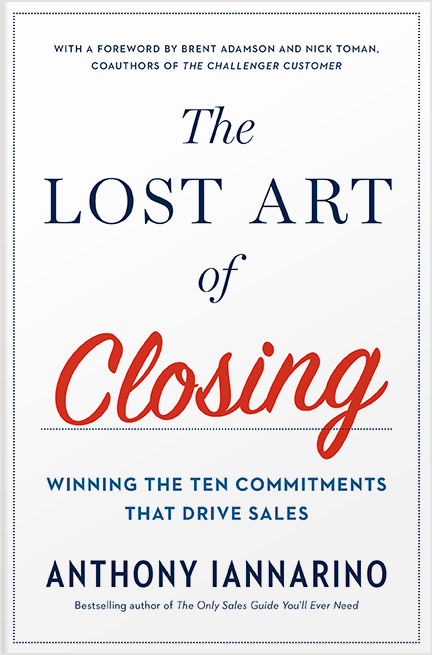The following list of principles is a short guide as to how you might think about B2B sales now. The list and the principles are both prescriptive, suggesting you do something, that you take action. The principles leave room for you to make different choices instead of limiting the actions you might take in pursuit of following these laws.
There are a few links here to posts and books I have written that might provide additional guidance, should you need it.
Be other-oriented: The more you focus on serving your client, the easier you make selling. If you are self-oriented, you create resistance to buying from you because your motivations betray the fact that the deal is about you.
Create value in every interaction: Your client has to believe they benefitted from giving you their time. If you wasted their time, you are less likely to obtain another meeting. You want to be so good that your client would pay you for your time.
Control the process: When you are prospecting, you sell a meeting. In a meeting, you sell the process. (Read this post) Many of the common challenges in sales stem from losing control of the process. Try never to leave a meeting without another meeting. If you want additional help here, pick up The Lost Art of Closing. No more pushy sales tactics. The Lost Art of Closing shows you how to proactively lead your customer and close your sales. 
Enter from the right: In Eat Their Lunch, I shared the idea of Level 4 Value Creation, the level of value your client would perceive as strategic. Start conversations with strategic outcomes and work backward to your solution. Win customers away from your competition. Check out Eat Their Lunch
Establish your credibility through demonstration: You prove you belong in the room by demonstrating you have the business acumen, the situational knowledge, and the intangibles. Your company, your time in the business, and your won logos mean less than ever.
Sell strategic outcomes: It’s easier to sell strategic outcomes than products or services, especially in the commoditized markets we find ourselves in now. The “dissatisfaction” that might have given rise to change in the past isn’t likely enough now. You have to increase the importance by focusing on more significant, more systemic problems. (Read this post from last week)
Focus on decision-makers: Most of the time, you will find your clients making decisions as a group, seeking consensus. Instead of looking for “the” decision-maker, you are looking for the “decision-makers” (plural). The fewer stakeholders actively participating in the sales conversation, the less likely you are to win a deal.
Engage in difficult conversations: You have to effectively deal with and dispatch the obstacles to change, even when it is uncomfortable, and even when others would prefer to avoid difficult conversations. You cannot be consultative or a trusted advisor if you are afraid to deal with challenges. Ignoring real issues is a lie of omission.
Help manage change: In The Only Sales Guide, I included a chapter about managing change. That is what we do in sales, we recommend change, we sell change, and then we are accountable for making sure the transition is executed. Learn Anthony's core strategies & tactics for sales success at any level with The Only Sales Guide You'll Ever Need
Continue to nurture and capture mindshare: Treat the first initiative with a new client as the starting point of the next initiative, a launchpad for even greater value creation. You start creating the next opportunity as soon as you stand up the first solution. (More on capturing mindshare in Eat Their Lunch)
Executing these principles requires serious effort. If you would be consultative, a professional in your craft, doing the work necessary to adhere to these principles will provide you with a path to becoming just that.








.jpg?width=768&height=994&name=salescall-planner-ebook-v3-1-cover%20(1).jpg)


